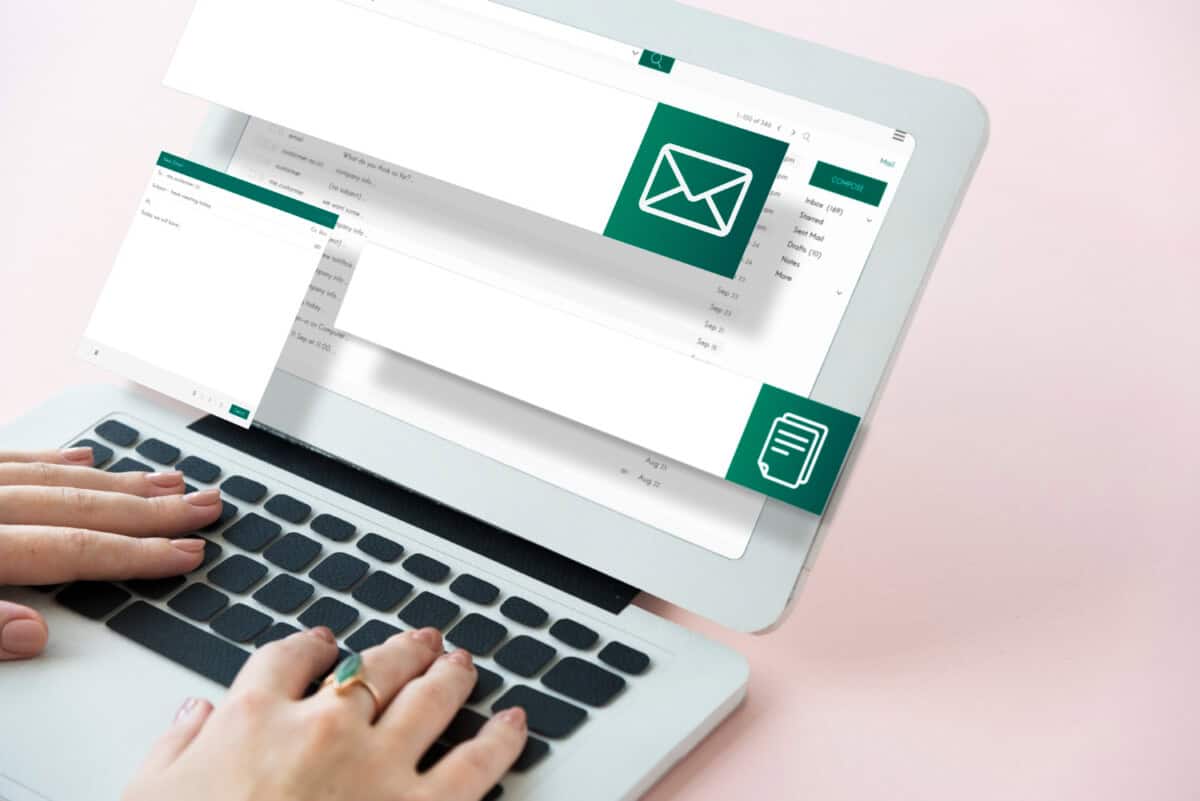Email has been declared dead more times than we can count. Yet, it still thrives as one of the best tools in the digital marketing toolbox. While newer channels like social media and chat apps get all the attention, email delivers results for brands big and small. The truth is, when done right, email marketing can drive engagement, build trust and generate real conversions.
Whether you’re a small business, an established brand or a founder working on startup lead gen, email gives you a direct line to your audience. The key is to craft emails that are more than just words in an inbox – they need to connect, engage and convert.
Why Email Still Works in a Crowded Digital World
It’s easy to assume email has lost its sparkle with the rise of faster, flashier channels. But the numbers tell a different story. People still check their inboxes every day. Unlike fleeting posts or disappearing stories, emails stick around. They can be read, saved, forwarded and referred to again. What makes email marketing powerful is control. You’re not at the mercy of algorithms or third party platforms. You can send personalized messages to the people who have chosen to hear from you. That kind of access is rare in today’s crowded media landscape.
More importantly, email allows for deep segmentation and automation. You can tailor content to different types of users based on their behavior, preferences and history. This level of personalization plays a big role in driving better engagement and improving conversion strategies across the board.
The Role of Email in Conversion Strategies
Conversions don’t happen by accident. Whether it’s getting someone to sign up, buy a product or download a resource, it takes intention and planning. Email plays a unique role in this journey. Unlike ads or landing pages that serve one off purposes, emails can guide someone through an entire decision making process. A welcome sequence can introduce your brand. A nurture sequence can educate the user. A promotional email can deliver the final nudge.
This layered approach supports long term conversion strategies. It builds a relationship rather than forcing a quick sale. For startups and small businesses, this is especially important. You may not have big ad budgets but with thoughtful email marketing you can drive steady, scalable growth.
Building an Email List That Actually Converts
Before you can convert, you need the right audience. A bloated email list filled with unengaged contacts won’t get you results. What you need is a permission-based list of people who want to hear from you. One of the best ways to do this is by offering something valuable in exchange for a subscription. This could be a discount, a free guide, or access to exclusive content. For founders focused on startup lead generation, offering a simple lead magnet like a checklist or a webinar invite can attract quality leads.
It’s also important to use double opt-ins. This helps ensure that subscribers are genuinely interested and keeps your list clean. A smaller, more engaged list will always outperform a larger, passive one.
Crafting the Perfect Welcome Email
First impressions matter. Your welcome email sets the tone for the entire relationship. It’s your chance to show who you are, what you offer, and why it’s worth sticking around. Start with a friendly tone. Thank the reader for joining. Share what they can expect and give them something valuable right away. If they signed up for a discount or freebie, deliver it immediately.
This email should also invite further engagement. Encourage readers to reply, follow you on social media, or explore your site. A well-crafted welcome email is the foundation of successful conversion strategies. It opens the door and starts the conversation on the right foot.
Writing Subject Lines That Get Opened
Your subject line is your email’s first impression. If it doesn’t grab attention, your message won’t get read. It should be clear, relevant, and make the reader curious. Avoid clickbait or vague phrases. Instead, focus on specific benefits or ask a question that speaks to your reader’s needs. Personalization can also boost open rates. Including the subscriber’s name or referencing their recent activity can make your message stand out.
Testing different subject lines through A/B testing is a smart move. Over time, you’ll learn what resonates with your audience. Strong subject lines are a small detail that can make a big difference in your overall email marketing performance.

Structuring Emails for Readability and Impact
Attention spans are short. Your emails need to be scannable and easy to digest. Use short paragraphs, clear headings, and plenty of white space. Start with a hook in the first line. Follow up with useful or interesting content, then end with a clear call to action. Whether it’s clicking a link, replying, or making a purchase, your CTA should be easy to find and focused on one primary action.
For startup lead generation, it’s helpful to keep things simple. Avoid cramming too many ideas into one message. Instead, focus on one goal per email and make it easy for the reader to take the next step.
Personalization Beyond the First Name
Personalization is more than adding someone’s name to a subject line. It’s about sending the right message to the right person at the right time. This means using behavior-based data to tailor your emails. Segment your audience based on where they are in the buyer’s journey. New subscribers might need education, while repeat customers might respond better to loyalty offers or product updates. With the right tools, you can automate this process and make personalization feel effortless.
For example, if a user visits a product page but doesn’t buy, follow up with a reminder or testimonial. These small touches can improve conversion strategies and show subscribers that you’re paying attention.
Using Automation to Stay Consistent
Consistency builds trust, but manually sending emails is not sustainable. That’s where automation comes in. Tools like Mailchimp, ActiveCampaign, and ConvertKit allow you to set up automated sequences that nurture leads over time. A common automation flow might include a welcome series, followed by regular educational content, and occasional promotional offers. This keeps your brand top of mind without overwhelming the subscriber.
Automation is especially helpful for startup lead generation. When you’re wearing multiple hats, having systems that run in the background ensures your outreach doesn’t stop. It also makes it easier to scale as your list grows.
Measuring What Matters in Email Marketing
You can’t improve what you don’t track. Keep an eye on open rates, click-through rates, unsubscribe rates, and conversions. These metrics tell you how well your emails are performing and where you can improve. For example, if your open rates are low, your subject lines may need work. If click-throughs are lagging, maybe your CTA isn’t clear or compelling enough. Tracking these numbers over time helps refine your email marketing strategy.
Conversion tracking is especially important. Make sure you know what actions count as a conversion, whether that’s a purchase, a download, or a reply. This is how you measure the true impact of your conversion strategies.
Avoiding Common Email Mistakes
Even good marketers fall into common traps. One is emailing too much; or not enough. Find your cadence. Another is being too salesy. If every message is a pitch, people will tune out. Balance promotional emails with educational or entertaining content. And don’t be generic. With all the tools we have today, there’s no reason to send the same message to everyone. Use segmentation and personalization to make your emails feel more relevant and valuable.
Why Storytelling in Email
People remember stories more than facts. Use storytelling to make your emails more engaging. Share customer success stories, founder journeys or behind the scenes moments. This kind of content humanizes your brand and builds emotional connection. For startups especially, sharing your mission and challenges can be powerful for lead gen. People like to support brands they believe in. Stories don’t have to be long or dramatic. Even small anecdotes can make your emails feel more personal and relatable.
Building Trust Over Time
Email is a long game. Building trust doesn’t happen overnight. It’s showing up consistently, providing value and being transparent. When people trust you, they’ll open your emails and follow your CTAs. Avoid spammy language or hard sell tactics. Make sure your emails sound like your brand and values. Over time this builds credibility and strengthens your conversion strategies. For startups and small businesses, trust is everything. You don’t have the luxury of brand recognition so email becomes a way to earn and keep attention.
When and How to Clean Your List
A healthy email list means better performance. Periodically clean out inactive subscribers who haven’t engaged in a long time. Keeping disengaged contacts can hurt your open rates and deliverability. Send a re-engagement campaign first. Ask inactive users if they still want to hear from you. If they don’t respond, it’s okay to let them go. Focus your efforts on the people who want to hear from you. This practice not only improves your email marketing results, it also helps you maintain an accurate picture of your audience, which is important for both reporting and planning.
Integrating Email with Other Marketing Channels
Email works best when it’s part of a larger strategy. Integrate your emails with social media, content marketing, and paid ads to create a cohesive experience. For example, promote your lead magnets across platforms to grow your list. Share email-exclusive content teasers on social to drive signups. Use email to follow up with users who clicked an ad but didn’t convert. This cross-channel approach strengthens your conversion strategies by reinforcing your message and staying visible across touchpoints. Email acts as the glue that connects your entire digital presence.
Conclusion
Despite endless predictions about its demise, email remains one of the most powerful tools for marketers. It’s personal, flexible, and direct. When you approach it with strategy and care, email marketing can drive real, measurable results. Whether you’re nurturing existing customers or focused on startup lead generation, email gives you a way to connect deeply and consistently. The key lies in crafting content that speaks to your audience, structuring messages for clarity, and using automation and data to work smarter. At its best, email isn’t just communication. It’s a connection. And that’s something no algorithm can take away.






